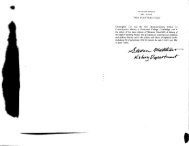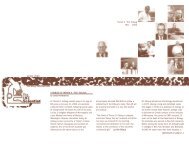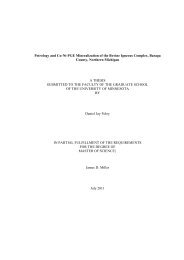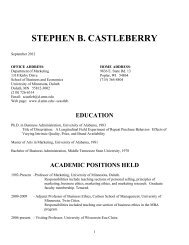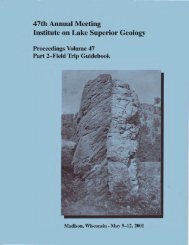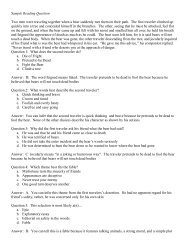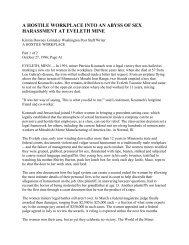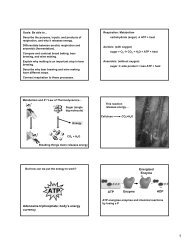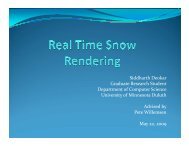Bird topography and feathers
Bird topography and feathers
Bird topography and feathers
Create successful ePaper yourself
Turn your PDF publications into a flip-book with our unique Google optimized e-Paper software.
Figure 4. Feather Structure<br />
TYPES OF FEATHERS. There are five principal types of <strong>feathers</strong> (Fig. 5):<br />
(1) Contour <strong>feathers</strong> give shape <strong>and</strong> a smooth protective surface to the body <strong>and</strong> are<br />
used for flight in the wings <strong>and</strong> tail. Contour <strong>feathers</strong> vary considerably in shape, size, <strong>and</strong><br />
texture over the body. This is the typical feather just examined.<br />
(2) Down <strong>feathers</strong> are small, with poorly developed shafts <strong>and</strong> no interlocking barbules.<br />
They are the principal feather type in young birds <strong>and</strong> are important as insulation in most birds.<br />
They lie under the contour <strong>feathers</strong>. Powder down is a specialized type of down best developed<br />
in herons. They are yellowish <strong>and</strong> grow in two patches on the breast. The other <strong>feathers</strong> are<br />
dusted with the powder produced by these <strong>feathers</strong>.<br />
(3) Semiplumes are intermediate between contour <strong>feathers</strong> <strong>and</strong> down <strong>feathers</strong>. They<br />
have a large rachis but no hooks.<br />
(4) Filoplumes are hair-like <strong>feathers</strong> that can be seen after all other <strong>feathers</strong> have been<br />
plucked from a bird. There are barbs only near the tips. They are thought to provide a sense of<br />
touch in the plumage, much like the small hairs on human skin do.<br />
6




